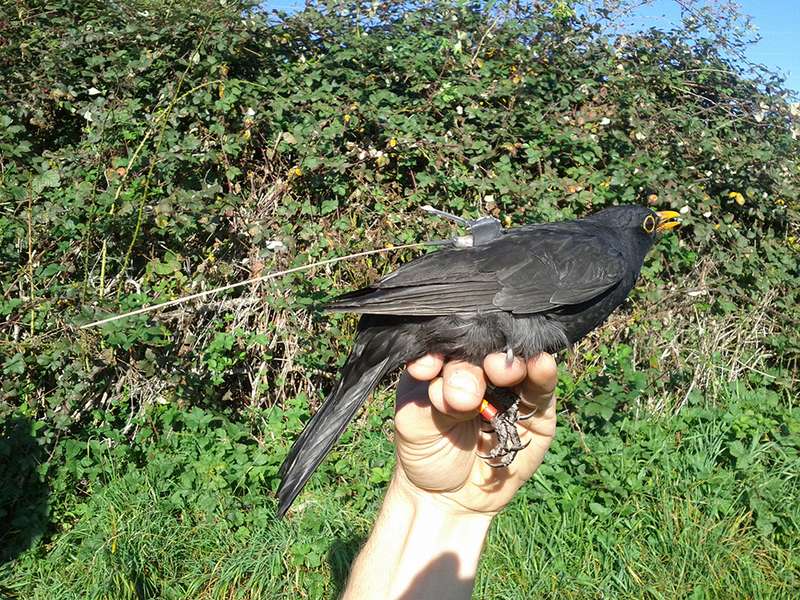Blackbirds switch abruptly to fly-by-night behaviour at migration time

Each year, billions of songbirds set out on autumn evenings to fly to their wintering grounds, necessitating a change of daily rhythm for the usually diurnal animals. Scientists had always assumed that the birds gradually adjusted their rhythm, but new technology has now enabled researchers at the Max Planck Institute for Ornithology in Radolfzell, with international partners, to observe free-living blackbirds at the onset of migration. They discovered that the birds change abruptly from diurnal to nocturnal activity immediately before departure.
Setting out on a journey in the dead of night is something most people find difficult. When diurnal songbirds like the European blackbird (Turdus merula) set off on autumn nights on the long journey to warmer climes, they too must spring into action at an unaccustomed time. They take to the air on starry nights between dusk and midnight, requiring a change from daytime to night-time activity. "But how do they do it? Do the birds gradually become more agitated over a period of time, or only when it's time to leave?", wonders Jesko Partecke of the Max Planck Institute for Ornithology.
For many years, ornithologists could only study migratory behaviour in captive birds. They found that the birds became unusually agitated at night during the autumn and spring migration periods, hopping to and fro, fluttering and whirring their wings. "This was seen as a sign that the birds feel motivated to migrate", explains Partecke.
Migratory restlessness in birds is difficult to define
But there was one thing they had no way of ascertaining. "Caged birds can't fly away, so the exact date of departure can't really be known." In other words, it was not possible to be sure whether the gradually increasing agitation of the captive birds actually corresponded to a kind of warm-up for the great migration.
This question could only be answered by free-living birds in the wild. However, until recently scientists were unable to take continual measurements of songbird activity in the wild. The technology was there, but it was too big and heavy for small birds and couldn't store enough data.
The miniaturisation of radio-telemetry solved this problem for the ornithologists, who attached the two-gramme devices to the birds' backs, like a kind of rucksack. Some of these birds would migrate and others would remain at the same location through the winter. Measurements revealed that the daytime and night-time activities of a partially migratory blackbird population were no different between migrants and residents in the days before departure. Furthermore, the free-living blackbirds did not display any pre-migratory agitation before their autumn departure. On the contrary, they switched abruptly to a nocturnal rhythm at the time of departure. "The blackbirds get off to a flying start, going from zero to a hundred just like that. It's suddenly time for them to head off at night and travel through the following nights - although they're actually diurnal birds", says Jesko Partecke.
On the way to the south of France
Partecke's next question is which route the blackbirds choose. It's that time of year again - time for many European blackbirds to migrate to the south of France. This time, Partecke is going south too – and observing the migrating blackbirds as they fly in the sky above him. This time, the birds have air pressure sensors in their backpacks so that the scientist can verify their altitude. "The idea is that the sensors will tell us how high the birds are flying. Are they going up over the mountains, or steering around them?"
One thing he does know: There will be more females than males, since the former are more fond of travelling than their male counterparts, who mostly stay at home.
More information: Daniel Zúñiga et al. Abrupt switch to migratory night flight in a wild migratory songbird, Scientific Reports (2016). DOI: 10.1038/srep34207
Journal information: Scientific Reports
Provided by Max Planck Society



















